Are You a Good Candidate
Why You Should Have
Refractive Surgery?
All the refractive disorders that have been discussed – myopia, hyperopia, astigmatism, and presbyopia – can be corrected by prescription lenses. But many people dislike wearing glasses or contact lenses every day, and every year over one million people in the United States choose to have some type of refractive surgery.
Most of these people are tired of being dependent on glasses or contact lenses; aren’t you?
Some of them are contact lens intolerant, which means they can no longer wear contact lenses without irritating their eyes. There are many reasons to opt for refractive surgery, including the inconvenience of dealing with glasses or contact lenses. Your lifestyle will probably have the most influence on whether or not you decide to have this procedure. And more importantly those very active athletes and professionals are choosing Epi LASEK and LASEK because it gives them a competitive edge, on top of being 10x safer than LASIK.
All of the aforementioned Refractive disorders are treated by Dr. Chynn and his team at Park Avenue Laser Vision, through the use of their advanced surgical procedures and reliable equipment. Our newly-upgraded VISX laser with auto tracking technology is the best type of laser on the market and costs around $500,000! Dr. Chynn is the first ophthalmologist in New City who had LASIK himself. As a result of his experience, he can provide you with optimal care and the best treatment your money can buy.
Are you the right age?
The general age recommendation is for people who are between 18 and 55 years old. However, Dr. Chynn has successfully performed LASIK on patients who were as young as 16 and as old as 85. The factors that determine whether you are the right age concern the general health and condition of your eyes. For example, even if you are the right age, some older people may have cataracts and this prohibits them from having LASEK.
Is your vision correctable?
The current LASEK procedure and the recently developed wavefront-guided LASEK accommodates any prescription, whether it be myopic, hyperopic, or astigmatic. Dr. Chynn had his own LASIK done in 1997. His pre-operative prescription was notated as [-7.50, 1.50 x 180, OU], meaning that he was severely nearsighted and moderately astigmatic in both eyes. He continues to have perfect 20/20 vision to this day. (OU = both eyes; OD = right eye; OS = left eye.).
The term diopter refers to the amount of refractive error in your eyes. A negative number indicates myopia, and a positive number indicates hyperopia. A greater diopter measurement signifies a more severe problem.
Do you have healthy eyes?
People who have glaucoma, dendritic corneal ulcers, severely dry eyes, keratoconus, aggressive keloid formation, corneal dystrophy, or other serious disorders or diseases are not eligible for refractive surgery.
To ensure that your eyes are healthy before your LASEK, soft contact lenses cannot be worn for two weeks prior to surgery, and hard contact lenses must be removed at least three weeks before surgery. This is important for the most optimal surgical results because contact lenses usually warp the cornea, and patients need to allow time for the cornea to regain its natural shape.
The curvature of the cornea is detected by a sophisticated computer called a corneal topographer (described in the next section), and your surgeon will not proceed with refractive surgery until the topographer detects a fairly symmetrical corneal surface.
Hard contact lenses need to be removed for a longer period of time than soft contact lenses because they tend to warp the cornea more severely. Corneal warping also depends on the fit of the contact lens and the length and duration of time for which the lenses were worn. It is strongly recommended that any patient who wears contact lenses not wear them for more than 8-12 hours a day, and it is especially advisable to remove them overnight.
What kind of tests will you need?
You should be prepared for thorough pre-operative testing. Dr. Chynn and his team will take you through a complimentary, comprehensive 9-point eye exam to make sure you are a good candidate for refractive surgery and to make sure you get the surgical procedure that is best suited for your eyes.
- Analysis of Old Prescription: We will “read” your old eyeglass prescription to make sure it is static and consistent.
- Auto-Refractor (AR): This machine measures the degree of hyperopia, myopia, and/or astigmatism in your eyes using infrared technology.
- Corneal Topographer: In this procedure, a computer creates an elevation map of your corneal surface. The main purpose of this test is to determine the frontal curvature of your eye and to ensure it is not warped. If you opt for the Wavefront procedure, an aberrometer is used to create a custom ablation profile prescription.
- Slit-Lamp Examination (SLE): Also known as a biomicroscopy, this examination analyzes at the anterior (frontal) structures of your eye, including the eyelid, sclera, conjunctiva, iris, and cornea.
- Tonometer: In this procedure, we use an instrument that measures the intraocular pressure of the eye to make sure you do not have glaucoma. The normal intraocular pressure ranges from 11-21 mmHg, or about 1/50th of the atmospheric pressure around you.
- Introduction to Reading vizion: Simply put, mono vision is correcting one eye for seeing things close up, while correcting the other eye for seeing things that are far away. Your brain will figure out when to use which eye and this procedure may be useful for patients who want freedom from reading glasses at an older age.
- Glare Testing: This simple test measures the extent of pre-operative glare that you normally see around bright objects. It will only be performed if you tell us that you have significant pre- operative glare symptoms. You can take this test again post-operatively to quantitatively measure if your glare has worsened or remained the same. Some patients are more sensitive to nighttime glare after surgery simply because they are more concerned about any aberrations in their vision; however, most do not experience a significant measurable change.
- Dry Eye Syndrome: In order to test and diagnose for this, we will measure your tear production, evaporation rate, and quality of tear film. Oftentimes, artificial tears can correct this relatively minor problem.
- Pupil size reading: This reading is performed in a darkened room with a simple instrument called a pupillometer that measures the diameter of your pupils. People with large pupils tend to have a greater degree of higher-order aberrations, and they may be good candidates for the Wavefront procedure (see Chapter 5). Our new WaveScan machine for the VISX Star S4 laser with an IR4 upgrade has a built-in pupil-measurement system, so we automatically perform this test on each and every patient, and adjust the diameter of the WaveFront treatment to match your pupil size if necessary.
What to expect?
The first thing you must understand that nobody can tell you how exactly your personal experience or sight will be until you come in for a consultation. That consultation is FREE, so coming in will be great, you will get your eyes checked out by an actual MD, not a technician or OD and you will get all the info you need to make an informed decision to correct your vision. You will also be informed about your options to get your vision corrected and get the possibility to test out your new vision with a PREVUE lens.
What is a PREVUE lens?
We can customize a lens for you to experience before your procedure what you will see like with our High-Definition option after the procedure. We make a detailed analysis of your eyes so you can experience what your vision will be like after the surgery.
How will your FREE consultation look?
When you get to the office you will be greeted by our front desk staff, they will take your information and then you will proceed to your consultation. During the consultation we will do two types tests: objective and subjective and you will talk to our staff, most of them had LASEK done so they can answer your questions from first hand experience as a patient and as a provider.
- Measure your corneal thickness
- Use computerized tomography to map your corneal relief
- Measure your eye pressure to make sure you don’t have glaucoma
- Do an auto-refractometer scan to get an idea what your prescription is
- Measure your pupil size in different light conditions
- Wavefront analysis of your eyes to get the most detailed view of your eyes and get the data for the Hi-Def procedure if you chose to do that.
After the objective part of the exam we will measure your RX with lenses to see what you find subjectively good. Also we will take a look at the back part of your eye, your retina, to see if there are any indications that you might have a condition that would either make you unsuitable for surgery or have anything to worry about. That part will require us to dilatate your pupils and you will not be able to drive for 2 hours. That why its necessary to either get somebody to be your escort or organize transportation.
On the day of surgery
Our will come in, well rested and relaxed, dress comfortable, sleep well the day before and try to be as relaxed as possible. We offer some relaxants to patients who want them, but don’t worry, it won’t hurt and Dr. Chynn has a perfect record so there is no worry, you will come out happy and seeing great!
The surgery itself is short, you will spend maybe 10 minutes in the OR, but the laser will work only for a minute or less! You will be on a very comfortable bed and dr. Chynn and your escort will be there for you all the time so you can just relax, there are people who are afraid that they will move their eye or something… but don’t worry first, the laser tracks your eye movement all the time, dr. Chynn will be looking to and can adjust the procedure if necessary, plus we have a great way for you to practice being a good patient! Here is the link to our laser simulator, try to look at the centre point for the duration of the simulation, it isn’t hard.
After the procedure is done dr. Chynn will come around you, help you get up, then you will open your eyes and see how your new eyes feel.
Now your vision will still be a bit blurry from the surgery but you will be able to see a lot better than before!
It will take a few weeks for your vision to be completely free of blurriness but you will be able start working by day 3 or day 5 depending on the type of surgery you chose LASEK or epiLASEK.
Also one more very important thing ,don’t expect the following: bait and switch tactics, pushing you into surgery, pressure from the staff and most importantly any complications with a flap. How can we promise ZERO flap complications? Easy, we won’t make you a flap! Dr. Chynn stopped doing LASIK with any form of flap in 2005 and now performs a safer and more modern type of surgery – LASEK, but not just any type of LASEK, he perfected a special protocol called SafeSight. If you want click here and find out more about SafeSight and how it compares to other types of surgery.
Key points about your expectations
- We can’t tell you how much will it cost or what type of surgery will be right for you without us examining your eyes in our centre.
- The free consult is a great way to have an exam done by a real MD and also find out what type of surgery will be best for you.
- There are 3 parts to your exam, objective by special machines, subjective done by MDs, talking to our staff who had this surgery done themselves.
- The surgery will be painless and you will be able to see after it but a little bit blurry for a few weeks.
- You can go back to your day job just 3 or 5 days after the surgery.



#1 Rated
LASEK, LASIK, PRK, SMILE Eye
Surgery Center in NYC
#1 Rated LASEK, LASIK, PRK, SMILE Eye Surgery Center in NYC
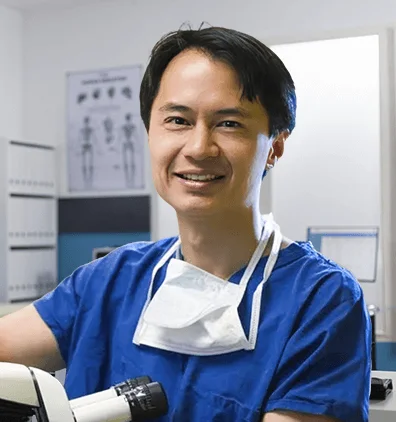

LASEK vs. LASIK
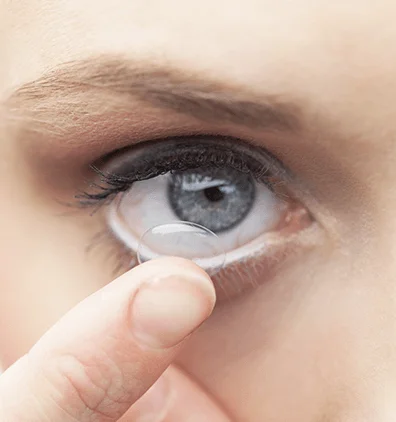

Ortho-K
Work while you sleep
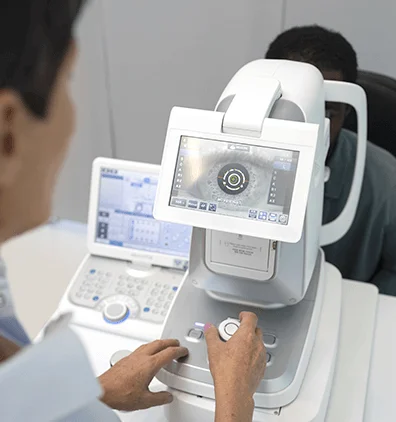

Cross-linking (CXL)
Keratoconus treatment
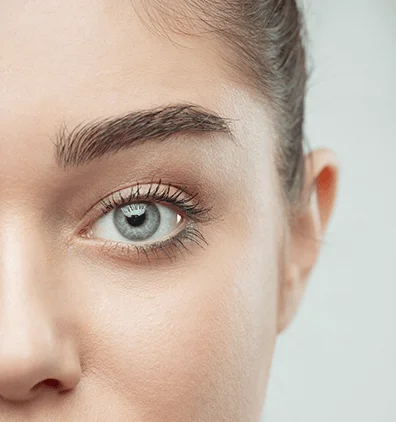

Eye Jewelry
Introducing the newest trend
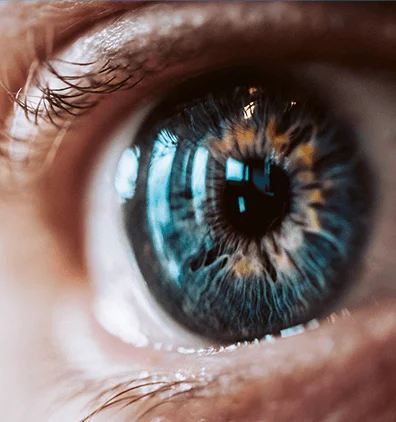

Corneal Tattoo
Ink to match your iris
(212) 741-8628

Get Directions to Park Avenue LASEK
102 E 25th St, New York, NY 10010


